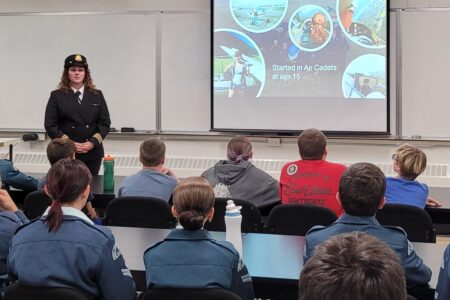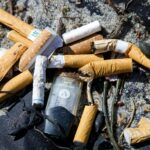Feeling fat? Throw away those non-stick pans. And avoid fast food, because of what it's wrapped in.
More food for thought – and action: Food is the right word to use, because food is how we acquire most of it. What does “it” refer to? A group of synthetic substances known as perfluoroalkyl substances, which is polysyllabic, so let’s just shorten it to PFASs.
Some PFASs are so widespread and so persistent in the world and in living bodies that scientists studying them believe that they are present in the bodies of everyone on earth (and probably in space, too). That alone might not be so alarming – after all, we all have many perfectly natural, necessary, and harmless substances in our bodies – but PFASs are not natural or harmless and research studies report that PFASs “have been linked with cancer, hormone disruption, immune dysfunction, high cholesterol, and obesity.” They are also very persistent in the environment and in the body; we don’t excrete them very well at all.
They are even classed as “obesogens” for their role in disrupting the body’s weight regulation – in slowing metabolism. For people whose immediate problem is obesity rather than immune dysfunction or cancer, or the fear of cancer, that alone may be enough to spur efforts to avoid accumulating more PFASs in our bodies.
The link to obesity is a relatively new finding. Earlier studies established links between PFASs and kidney and testicular cancers, thyroid disease, low birth weight and immunotoxicity in children; immunotoxicity can result in allergy, autoimmunity or any number of inflammatory-based diseases or pathologies.
We can take steps to avoid absorbing more PFASs. Those steps include throwing away our non-stick pots and pans, or at least not using them very often, and avoiding foods with wrappers treated with PFASs – a significant percentage of wraps for bread, sandwiches, pizzas, French fries, micro-wave popcorn and so on contain PFASs, which migrate into the food and into our bodies, where they build up and cause undesirable changes. If fast food alone weren’t enough of an obesity threat, much of the stuff it’s wrapped in makes it more so; a one-two punch.
Eating food contaminated with PFASs from cookware or wrappings accounts for most of the build-up in human tissues, but PFASs are also found in water-resistant garment fabrics such as Gore-Tex, in some leather, carpeting, upholstery fabrics, ski waxes, fire-fighting foams, and lubricants. Some drinking water supplies are contaminated with PFASs, especially near some industrial sites, military bases and wastewater treatment plants.
Putting drinking water through charcoal filters can help protect from more exposure, and also making sure that fabrics in the home and wardrobe are not “stain-resistant” or “flame-retardant.” We can also do our best to avoid the other sources of PFASs mentioned above.
Polar bears and other wildlife are less able to choose avoidance tactics. Researchers in Denmark and Canada have been tracking levels of PFASs in polar bears, and were alarmed at finding the substances in the bears’ brain tissue as well as other organs. The bioaccumulation of PFASs in the polar bears was eight times higher than in the seals the bears were eating. We should be concerned about this because, like polar bears, humans are “top predators” who tend to dine high on the food chain.
Mothers’ milk is another source of PFASs, so it’s very good news that levels of PFASs in the Arctic, at least, now appear to be declining, based on the analyses of polar bears mentioned above.
Armed with some knowledge, humans in the temperate zones can take steps to ensure that our personal levels of PFASs also decline.























